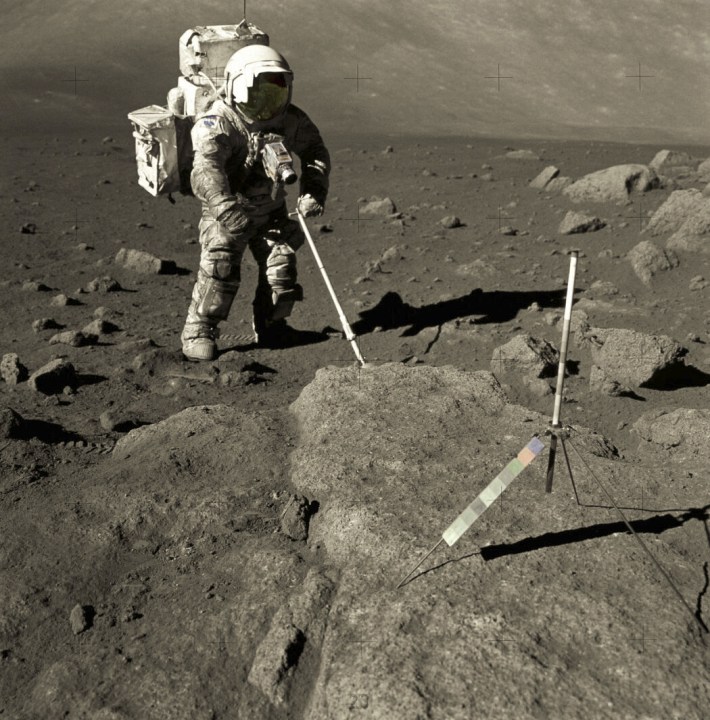A recent study has suggested that the moon may be much older than previously thought. Researchers working on samples collected by Apollo 17 astronauts in 1972 have performed an analysis that suggests the moon may be as much as 4.46 billion years old, which is 40 million years older than previous estimates.
The research was performed on zircon crystals, which are small trace mineral crystals found with the sample of dusty material from the moon’s surface, called regolith. “This study is a testament to immense technological progress we have made since 1972 when the last manned moon mission returned to Earth,” said one of the researchers, Dieter Isheim of Northwestern University, in a statement. “These samples were brought to Earth half-a-century ago, but only today do we have the necessary tools to perform microanalysis at the requisite level, including atom-probe tomography.”

The analysis works by counting individual atoms within a sample to see which of them has undergone radioactive decay. The time that it takes for particular elements to decay is well-known, so by looking at the proportions of decay and undecayed atoms, researchers can estimate the age of a sample.
“Radiometric dating works a little bit like an hourglass,” explained lead researcher Philipp Heck of the Field Museum. “In an hourglass, sand flows from one glass bulb to another, with the passage of time indicated by the accumulation of sand in the lower bulb. Radiometric dating works similarly by counting the number of parent atoms and the number of daughter atoms they have transformed to. The passage of time can then be calculated because the transformation rate is known.”
The researchers found crystals dated as old as 4.46 billion years, suggesting that the moon is older than the previous estimates of 4.42 billion years’ age, a finding that is supported by some other previous research. The moon is thought to have formed when an enormous object as large as Mars crashed into the Earth, sending off a chunk of material that became the moon. This event is thought to have been important for the formation of life on Earth, as the moon helps to stabilize the climate by stabilizing the tilt of our planet.
The research is published in Geochemical Perspectives Letters.
Editors’ Recommendations

